With the ESR 1000 Series, Crown adds a new dimension to the reach truck segment. Thanks to the optional Xpress Lower technology, the mast is lowered at an unprecedented rate and energy is also generated. Both aspects deliver noticeable gains in productivity and energy consumption during the test.
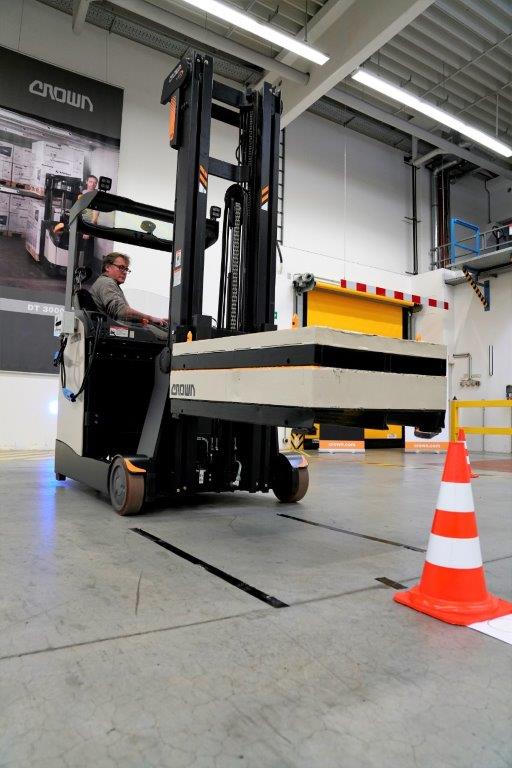
Crown is a brand with a unique approach of trucks and their usage. The products stand out because of their balanced grey/black colour scheme with orange accents, very often very well-thought-out design and a high degree of self-produced components. With the new ESR 1000 Series reach trucks, the American manufacturer introduces new features such as the patented Xpress Lower technology, the Gena operating system and a next level of safety advice and guidance for the driver.
The ESR Series is developed, enginered and produced in Germany. It has models of 1.4, 1.6 and 2 tonne lifting capacity and offers mast heights up to 13,560 mm. Our test candidate is the ESR 1060 with 1.6 ton lifting capacity, a mast height of 6,840 mm and a lithium-ion battery of 48V/468 Ah.
The first acquaintance with the ESR is positive. The truck is accessible and open and neatly finished. We notice this in the beautifully shaped entry/exit, neat layout of the cabin and the ergonomically adjustable armrest and steering column. Sharp edges are missing and there are several handy storage compartments and bins. We can even get rid of our clipboard without losing it on the way.
You can activate the truck with a PIN code or a tag. Crown used the InfoLink system to prepare for our arrival, so we’re greeted by name when we log in with the tag. An extensive user profile can be linked to the login, in which a lot of things are arranged. This exceeds the usual driving modes and also offers lifting height presets and whether or not to go through the ‘pre-op check’ or safety inspection before the start of the shift. In addition, the display randomly provides safety tips, such as keeping your feet safely inboard or watching out for tipping hazards. Through a small loudspeaker in the cabin, the driver occasionally hears a music that indicates whether you are operating the truck correctly (in ascending melody) or incorrectly (pitch descending). In the beginning we experience this as a bit irritating, but gradually you notice that it is not unjustified. You really become more aware of taking care of a save and correct working method.
After logging in, the rest of the new Gena user interface will also become visible. The 7-inch color touchscreen makes it easy to select widgets that you as a driver like to use. For example, lift height and weight indication, lift height preselection, steering wheel indication, battery information etc. Here, too, operation is very intuitive: you choose what you want just by swiping and tapping the screen or via the jog dial button (as in many cars) on the armrest.
The Gena system is programmable in 25 different languages. Service engineers and account managers can view and set all settings and history of the truck via the display. No laptop is required, which saves time and money for the end user to adjust to his preferences, according to Crown.
The mast is offset positioned and optimally arranged for visibility. All hydraulic functions can be precisely and predictably controlled via the easy-to-use fingertip levers. In the maximum performance mode P1, lifting a 1-ton load is fast with 61 cm/sec. Even in the more economical modes, lift speeds remain above average.
Lowering is even faster thanks to the (optional) Xpress Lower technology with maximum speed of 110 cm/sec. Crown combines this patented technology with regenerative lowering where the returning oil flow generates energy. Our test truck scores a lowering speed of 69 cm/sec when handling 1 ton. To see how strong the effect is at higher masts, we also measure the performance of a 12-meter mast. This even drops by 84 cm/sec, which is an absolute test record. The unloaded fork also drops rapidly by 52 and 62 cm/sec respectively (for the 12-metre mast) including the free lift. Converted, the Xpress Lower technology turns out to be 50% faster compared to Crown’s safety lowering speed that occurs automatically when the mast is reached out. Compared to the ‘productivity benchmark truck’ in our database, the lowering speed is 25% faster.
During our test we ‘only’ lift up to 5 metres and the time advantage of the Xpress Lower system offers less profit than at higher working heights. Nevertheless, the smooth reaction of the mast remains definitely a positive experience. However, those who work very frequently at these large heights should consider a better layout of the warehouse. A good ABC analysis may be more effective than rapid lowering alone.
The second advantage of Xpress Lower is the regeneration of energy during lowering. In our measurement this is on average 11% of the energy needed to lift. It does not matter whether we do this with the 5-meter levy or up to 12 meters. So, every 9th lift comes for free from an energy point of view. If we add this gain to the generated braking energy, we arrive at a favourable energy consumption of the ESR 1000. Both in terms of productivity and energy consumption, Crown scores top values in the reach truck segment. The lithium-ion battery offers additional benefits of problem free opportunity charging when needed.
The ESR achieves good scores partly because of the predictable driving behaviour. This would be even better if steering at higher speeds would be a bit stiffer and give more feedback to the driver. Driving around corners goes very well thanks to the correct setting of the Optimized Cornering Speed system. Furthermore, the overall ease of operation and the good view of fork tips and support legs make working even easier. As the only truck on the market, Crown has been providing both top and bottom yellow indicator stripes on the forks for years. The front of the support legs also features a contrasting colour. This certainly makes it easier to reduce collisions with racking uprights.
Present on the truck, but not used during the test, are the lifting height preferences and the automatic levelling of the fork. What is clear, however, is that these functions are very easy to use.
With the ESR 1000 in this test, Crown brings a truck that combines high productivity with very low energy consumption. The truck is predictable and offers a high level of safety. The intuitive display, combined with the assistant systems, gives the operator every opportunity to make the job easier. A point for optimisation can be seen in the fine-tuning of the steering functions when driving at higher speeds.

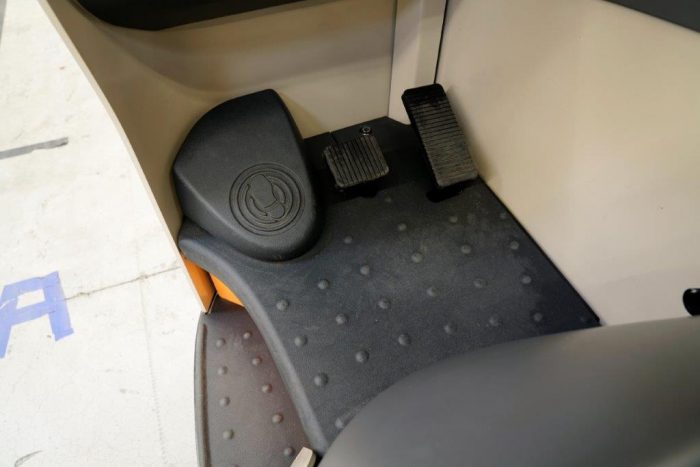
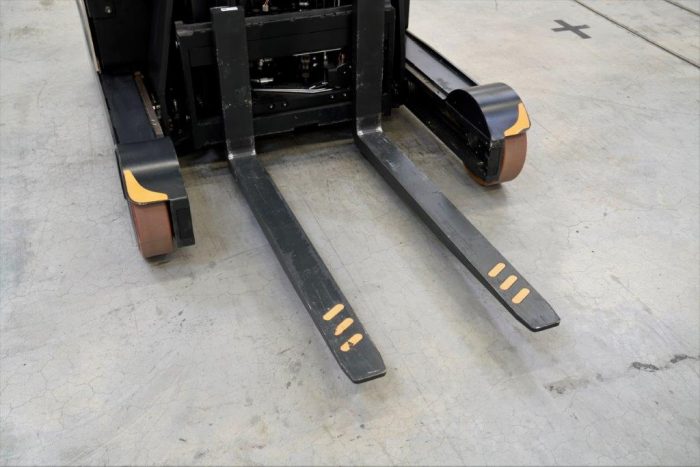
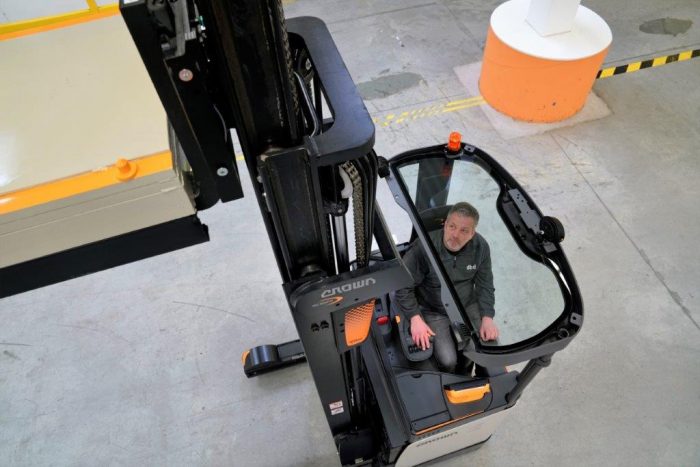

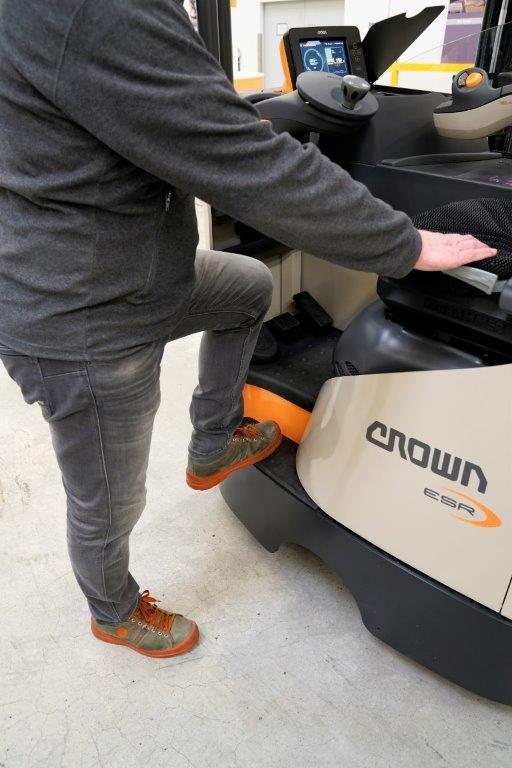
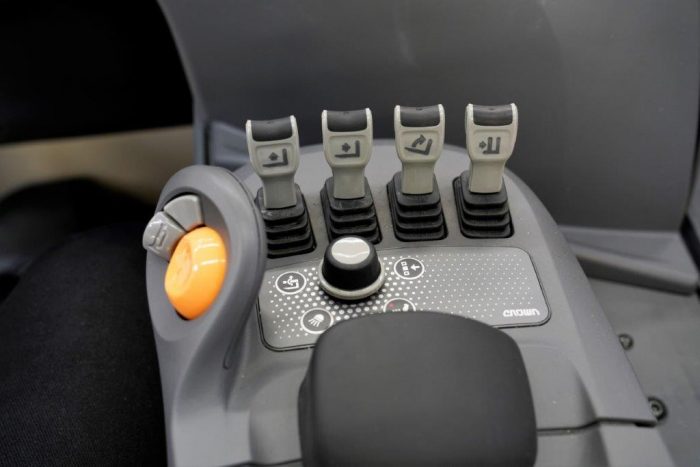
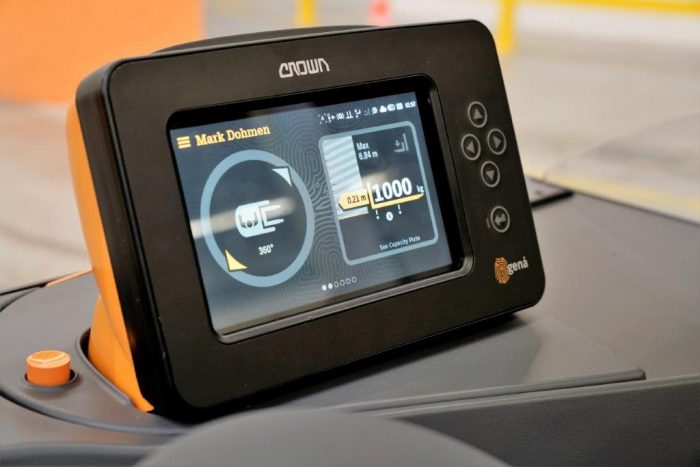
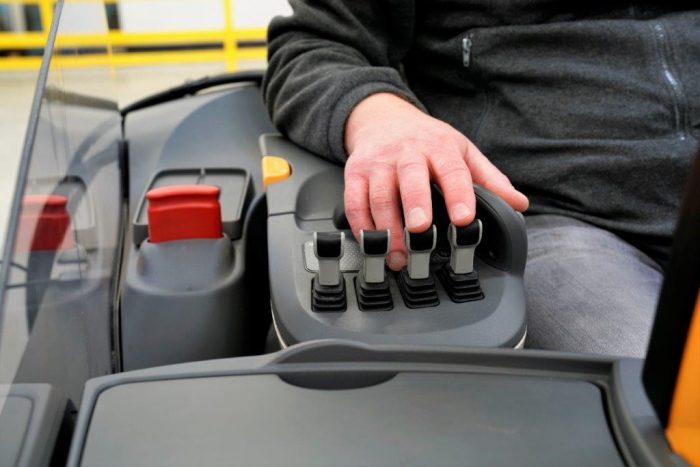
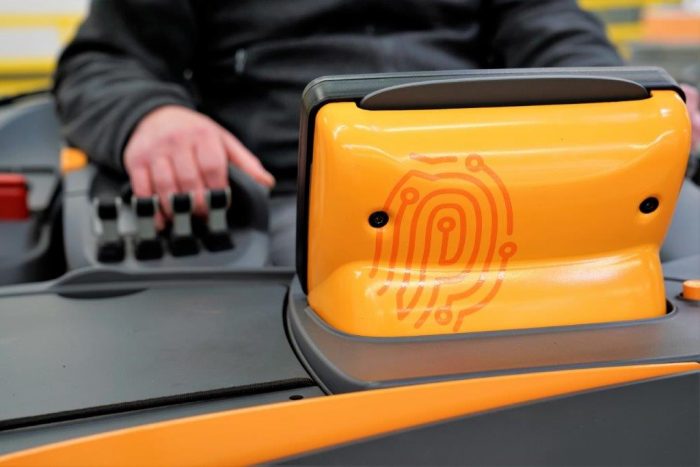
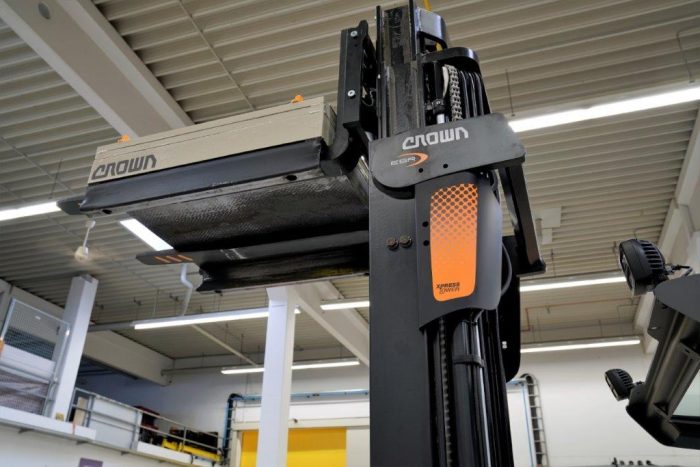

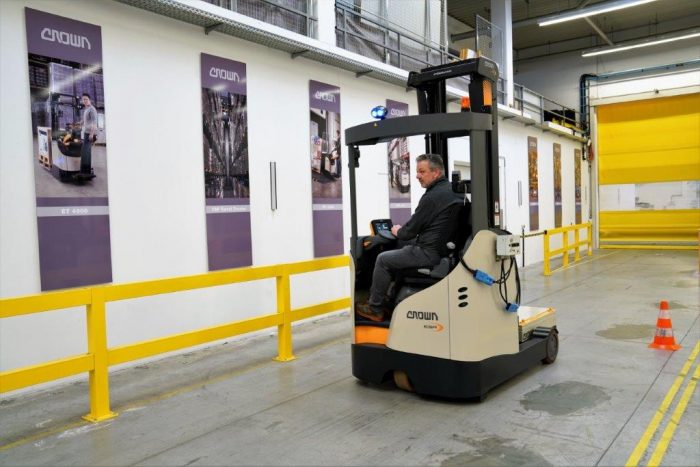
(Text and photos: Andersom Testing, Theo Egberts and Mark Dohmen)
Tags:
Andersom test, Andersom testing, Crown, Crown ESR 1000, ESR 1000, Intralogistics, Reachtruck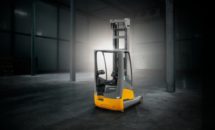
Jungheinrich celebrates the win of five German Design A...
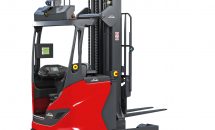
Linde Material Handling has updated its product range ...

Linde Material Handling was happy to be back at LogiMA...